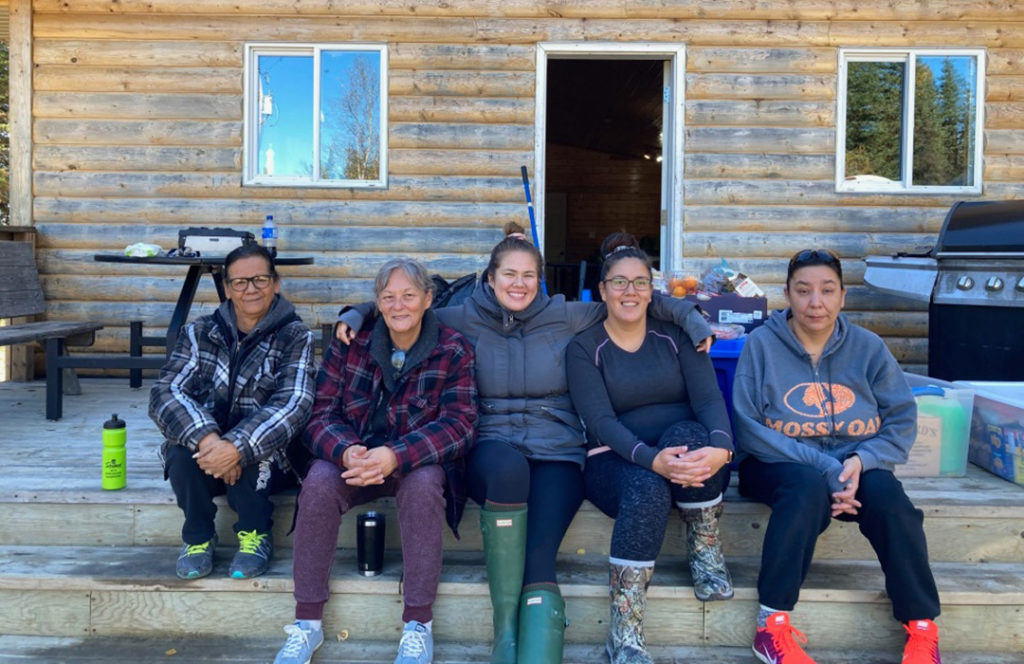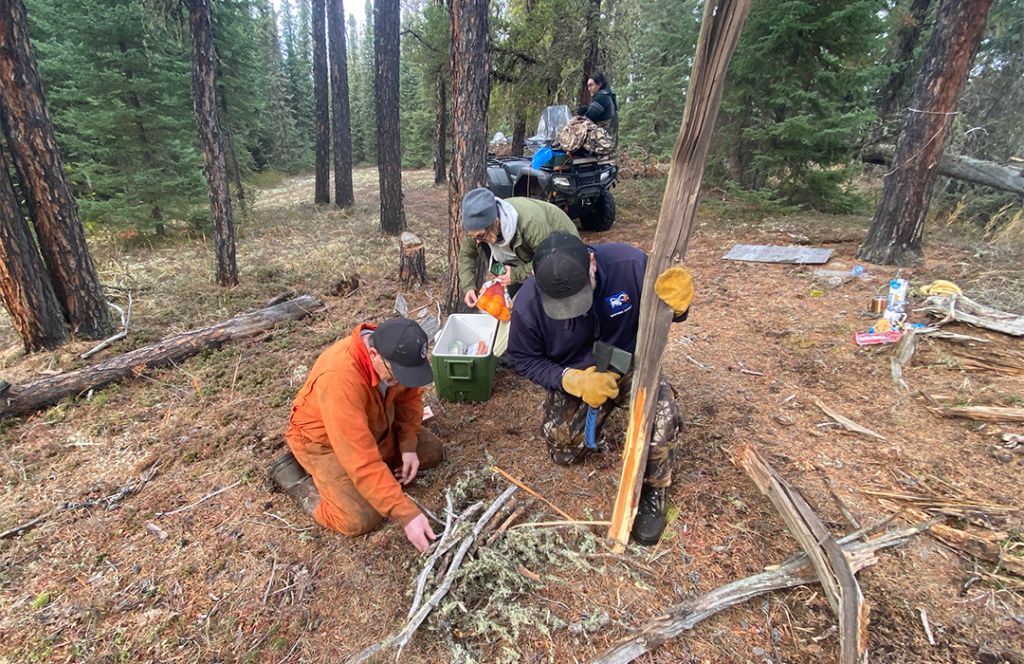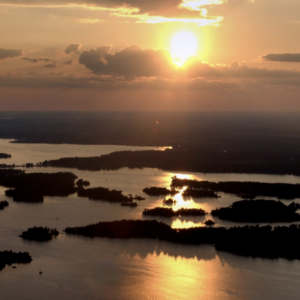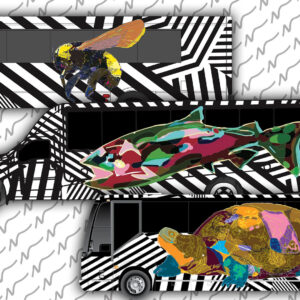Why the Métis Community of Île-à-la-Cross needs the Michif Language
“Marrsî” means “Thank you” in Northern Michif, the language of the Northern Métis peoples of Canada. It’s the first word that Nature Canada staff were introduced to when we arrived to meet the wonderful community of Île-à-la-Crosse in Northwest Saskatchewan and it’s the one we find ourselves saying over and over again to our Sakitawak IPCA partners for their efforts to protect the boreal forest of their traditional lands.

Métis conservation knowledge is based on the Michif language and traditional Métis practices. Protecting the land helps protect the language and vice versa.
“The language connects to the land like butter to bannock.”
Vince Ahenakew, Michif Language Teacher and Sakitawak IPCA Board Member
Here are some facts about Michif to help better understand the language and some words for you to try out on your own.
“Marrsî” to Vince Ahenakew, from Île-à-la-Crosse who helped us write this blog!
About the Michif language
The Michif language, spoken by Métis people, consists of French nouns, adjectives, numbers and Cree verbs, personal pronouns, and syntax. If you know some French, some of the words may look and sound familiar but Michif is a language all its own. We are presenting the dialect spoken in Île-à-la-Crosse but spelling and pronunciation vary depending on the region. There are even sub-languages, including Michif-Anishnaabe, Michif-Cree, and French Michif.
“We have three dialects of Michif. Ours is Northern Michif. I’ll say it’s about 10 percent French and a little bit of English thrown in there from time to time, it depends on where you are, and a whole lot of Cree. So, it’s really easy, or I guess it’s really commonplace for people to be using both, switching between French and English when they talk.”
Vince Ahenakew, Michif Language Teacher and IPCA Board Member at Île-à-la-Crosse
The number of Michif speakers is declining because of colonial influences but communities like Île-à-la-Crosse are working to reverse that trend. Children in the community learn Michif at home and at school, there’s a Michif-language radio station, and conservation efforts like the Sakitawak IPCA help to promote Michif names for places and species.
Why is the Michif language so important for conservation?
Indigenous communities often inhabit areas of biodiversity, where conservation is crucial. The Métis, Woodland Cree, and Dene communities of Île-à-la-Crosse in Northwestern Saskatchewan are one example of this.
Traditional knowledge from such communities is the key to sustainably conserving their biodiversity. The Métis of Île-à-la-Crosse have been sustainably using the land for centuries and safeguarding Woodland Caribou, Walleye, and the boreal forest.

The conservation efforts of the Sakitawak IPCA are based in the traditional practices of the Métis who have lived there for centuries and passed down their knowledge and skills orally (mostly in Michif). Furthermore, the IPCA is an effort not just to preserve the land and waters of the N-14 fur block, but also to preserve and celebrate the culture and traditions of those who live there. By using and promoting the Michif language, the community will be preserving and strengthening the sustainable community practices which will be indispensable in protecting the biodiversity of the Sakitawak Indigenous Protected and Conserved Area.
“There’s a lot of place names in our historical community here that are in Michif, a lot of the terms, and a lot of the way of preserving and preparing these foods, the animals. All the animals have different names as well, and the trees and the plants, and those kinds of things, plus the medicines they get and all the foods, that’s all tied into the language. So all that knowledge is there, it’s just a matter of reviving it.”
Vince Ahenakew, Michif Language Teacher and IPCA Board Member at Île-à-la-Crosse
Pronunciation Guide
Here are some more words and phrases for you to try on your own at home:
Hello: Tân’si
“Hello, my name is ______”
Tân’si _____ nisihkâson.
Woodland Caribou: atihkwak
“The Woodland Caribou use the N-14 fur block as a calving ground.”
atihkwak âpacihtâwak askî misowî ôta N-14 ôma î ocawâsimsocik misowî maskîkohk
Walleye: lî dörrî
“Walleye are an important source of food for the community of Île-à-la-Crosse.”
Aspin ohci Sâktawînowak kî mowêwak lî dörrî, êkwa pimâcihisowak lî dörrî êkwa nanâtohk itowa kinowsêwak / lî pwasöň mîna isihkâtêwak
Forest: nohcimihk / sakahk
“We make tea from the labrador tea plants which grow in the boreal forest.”
L’tî ni osihtamâsonân mâna nîpisîsa maskîkohk ohci
Bald Eagle: mik’sô
“Bald eagles are one of many bird species who make their home in the N-14 fur block”
mik’sôwak mîna mihcåt kotakak nanâtohk piyîsîsak misowî ôta N-14 pimâcihisowak
Nature: askî
Indigenous-led conservation projects like Sakitawak IPCA are helping us halt and reverse nature loss.
Sâkitawâwînowak kâ nîkânîstahkwâw ôma IPCA kwayes wîcihômakan ta nakinama kâ misinawâtahtâcik askî
Thank you: Marrsî
“Thank you for taking a little bit of time to learn about Michif and the community of Île-à-la-Crosse.”
Marrsî ôma kâ ayamihtâyin, ap’sis ta kiskihtamin Nêhiyawêwin ôma Michif mîna tân’si î isi pimât’siya Sâkitawahk.
Check out these resources to learn more about Michif
Nature Canada thanks Vince Ahenakew for help with writing this blog. Vince is a Michif language teacher in Île-à-la-Crosse, SK and a board member of the Sakitawak IPCA.



